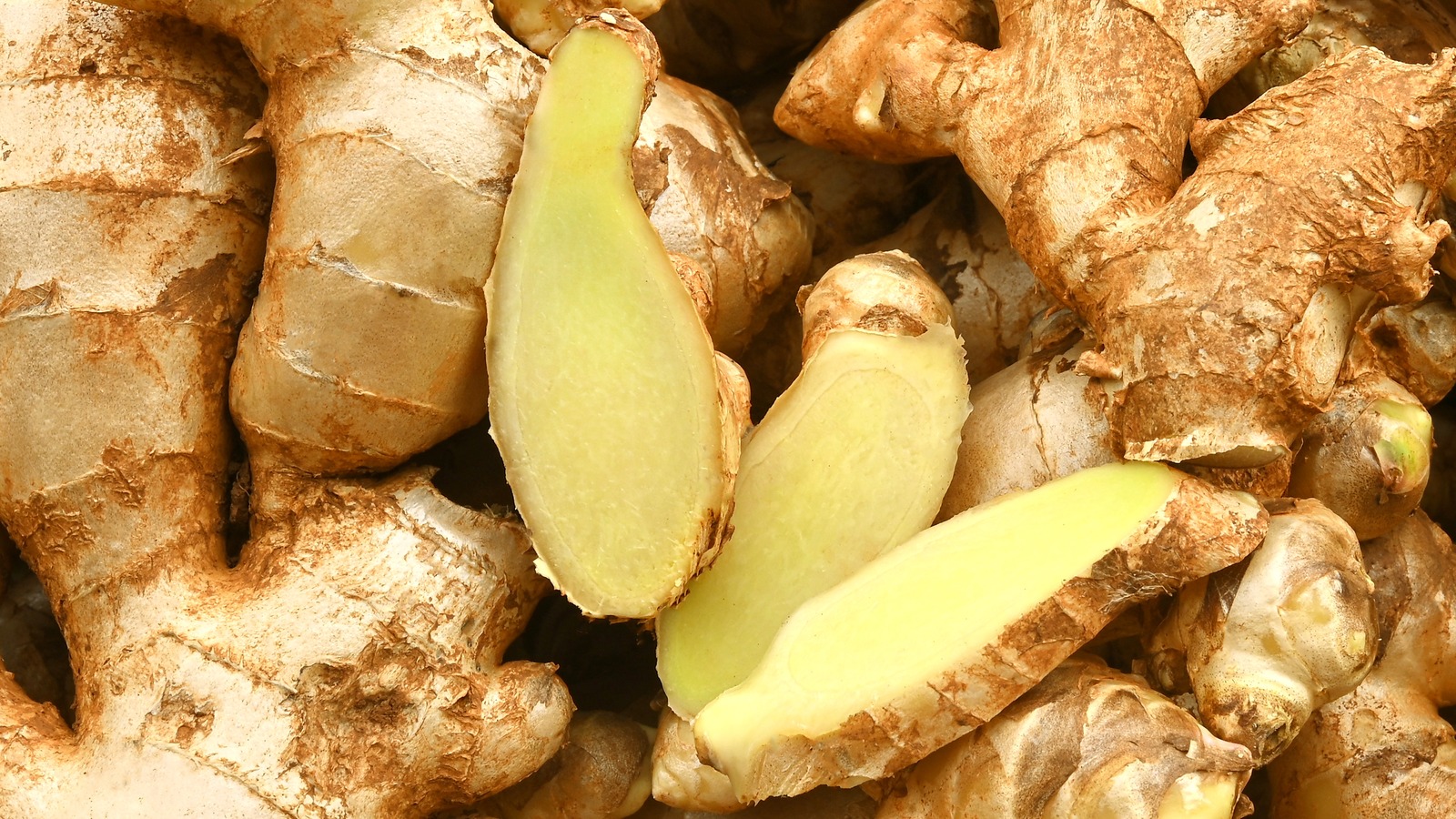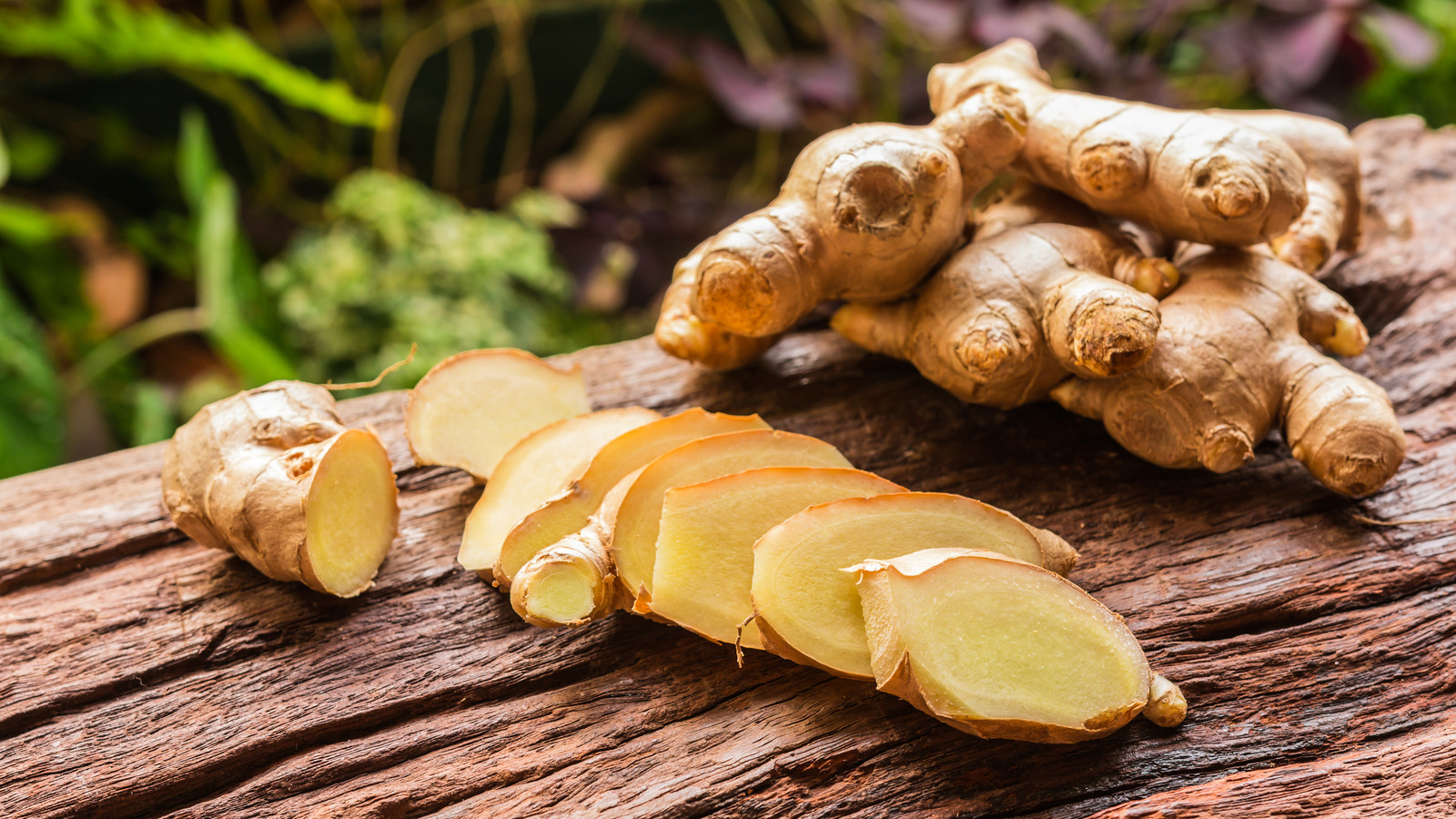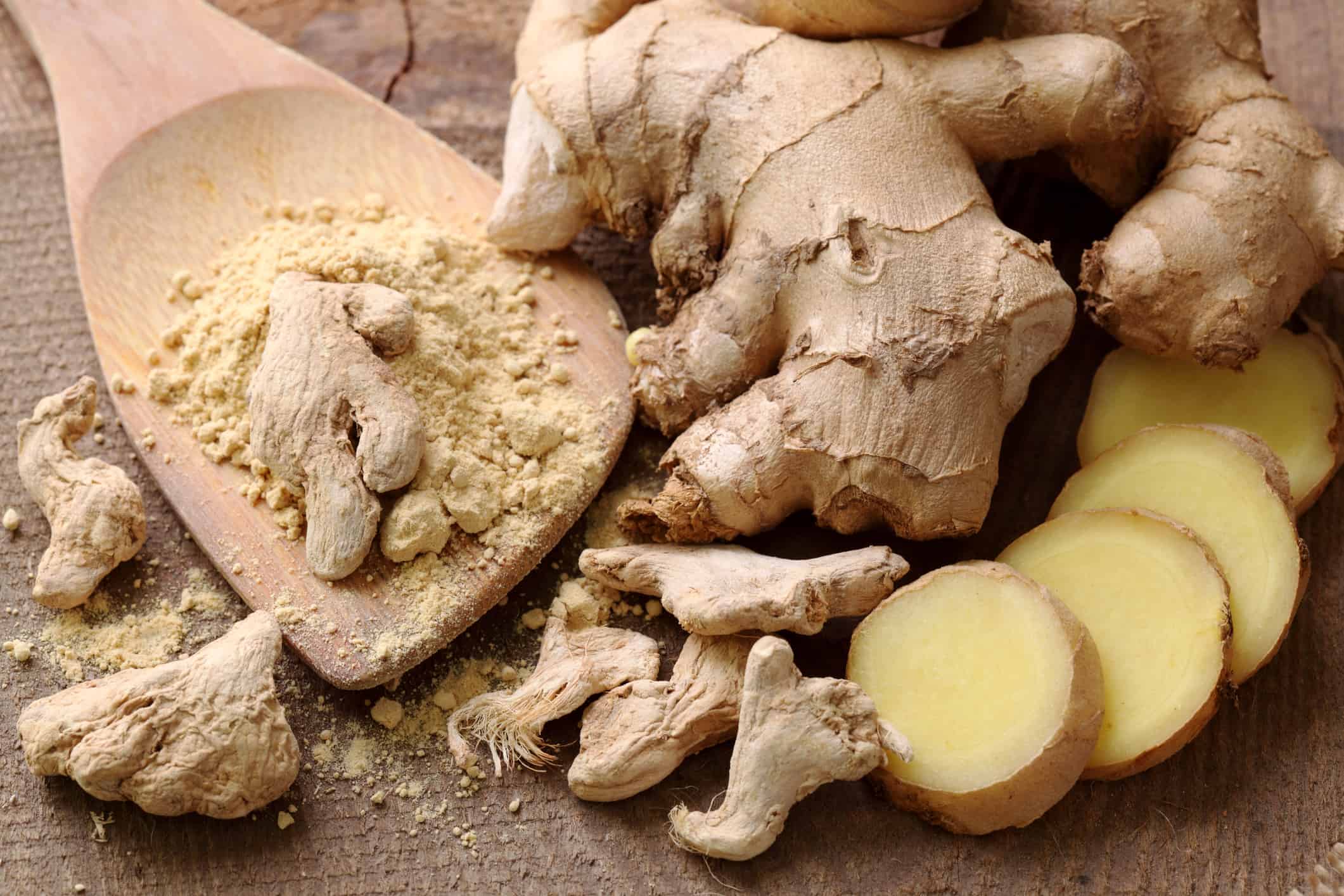Ginger Spice - A Tale Of Flavor And Fame
There are certain names that, quite simply, bring to mind a burst of energy, a distinct taste, or perhaps a memorable tune. For many, the phrase "ginger spice" might make you think of a warming, zesty flavor that brightens up a meal. For others, it could call to mind a pop culture figure known for her vibrant presence and powerful voice. It's interesting, too, how these two very different ideas share a name that hints at something bold and full of life.
It's almost as if the universe decided to give a similar label to things that stand out, whether it's a root that adds a kick to your food or a person who brought a certain spark to the music scene. This common thread, this shared name, ties together a culinary delight with a pop icon. You know, it's a bit like finding connections in unexpected places, seeing how a simple phrase can hold so much meaning for so many different people.
So, whether you're someone who loves to cook with a fresh piece of this plant or you remember singing along to a particular group's songs, the idea of "ginger spice" probably brings a certain kind of feeling. We're going to look at both sides of this idea, exploring the plant that has been cherished for ages and the person who became famous for her part in a truly iconic girl group. It's a rather interesting journey, don't you think?
- Bella Retamosa Leaks
- Sophie Rain Onlyfans Spiderman
- Alex Zedra Naked
- Sophie Rain Lesbian
- Camilla Araujo Sextape Leak
Table of Contents
- The Fiery Personality Behind Ginger Spice - Geri Halliwell
- Personal Details - Geri Halliwell, the original Ginger Spice
- What Makes Ginger Spice So Special in the Kitchen?
- Cooking with Ginger Spice - From Savory to Sweet
- How Can Ginger Spice Support Your Well-being?
- The Goodness of Ginger Spice - A Natural Helper
- The Ancient Story of Ginger Spice
- Where Does Ginger Spice Come From, Anyway?
- Is Ginger Spice a Herb or a Root?
- Understanding the Plant - What is Ginger Spice?
- The Warmth and Zing of Ginger Spice - What Gives it its Kick?
- The Flavor Profile of Ginger Spice
The Fiery Personality Behind Ginger Spice - Geri Halliwell
When we talk about "ginger spice" in the world of pop culture, one name immediately comes to mind: Geri Halliwell. She rose to widespread recognition as a member of a truly famous group, the Spice Girls. This group, formed in the year 1994, really made a mark on the music scene. Geri, with her lively spirit, a look that caught people's eye, and a voice that truly carried, captured the attention of many people across the globe during the 1990s. She was, in a way, a defining figure of that time, embodying a particular kind of confidence.
The Spice Girls were known for their message, often called "girl power," which seemed to resonate with a lot of listeners. The group included several distinct personalities, each with a nickname that stuck. There was Mel B, known as Scary Spice; Melanie C, who was Sporty Spice; Emma Bunton, often called Baby Spice; Victoria Beckham, recognized as Posh Spice; and of course, Geri Halliwell, who was affectionately known as Ginger Spice. It was a rather unique blend of talents and styles that created something special.
Geri's presence was, you might say, quite memorable. She brought a certain kind of energy to the group's performances and public appearances. Her contribution helped make the Spice Girls a household name, leaving a lasting impression on popular music and culture. She was a key part of what made that group so successful, helping them become one of the most recognizable musical acts of their time. It's pretty clear she left her mark.
Personal Details - Geri Halliwell, the original Ginger Spice
For those curious about the person behind the famous name, here are some personal facts about Geri Halliwell:
| Birthplace | Watford General Hospital, Watford, Hertfordshire, England, United Kingdom |
| Father's Name | Laurence Francis Halliwell |
| Father's Birth Year | 1993 (as per My text, though likely a typo for an earlier year given Geri's age) |
| Famous Group | Spice Girls |
| Role in Group | Ginger Spice |
What Makes Ginger Spice So Special in the Kitchen?
Beyond the pop star, "ginger spice" also refers to a truly remarkable plant that brings a special touch to many dishes around the world. This ingredient, with its inviting warmth and a flavor that offers a bit of zest, is far more than just something you add for taste. It's a powerhouse, you see, full of good things for your body and holding a lot of meaning in different cultures. It's not just a simple root; it's something that can truly transform a meal.
This plant, which originally grew in Southeast Asia, is used across the globe for a few very good reasons. People love its distinct taste, the ways it can help your body, and even its aroma, which can be quite invigorating. If you've ever found yourself thinking, "what can I use ginger spice in?", you're certainly not alone. Its uses are, in some respects, almost endless, making it a favorite for cooks everywhere.
It's a rather lively, flavorful, and incredibly adaptable plant, often called Zingiber officinale. This common name, ginger, is much more than just that bumpy piece you might keep in your refrigerator. From comforting warm drinks to bright, zesty salad dressings, from baked goods with a bit of a kick to bubbly herbal drinks, this bold plant adds warmth, a unique taste, and a sense of well-being to nearly every sip and bite. It belongs to a group of plants called Zingiberaceae, which are known for being aromatic and tropical. It's quite a versatile item, you know, capable of so many different things.
Cooking with Ginger Spice - From Savory to Sweet
This spice, which has been valued for hundreds of years, does more than just make food taste better. Its profile of good things for your body is quite impressive, filled with vitamins, minerals, and other helpful components. This means that when you cook with ginger spice, you're not just adding flavor; you're also adding something beneficial. It's a pretty good deal, really, getting taste and goodness all at once.
In places like the Caribbean, this ingredient is very popular. People use it as a cooking spice and also to make drinks, such as a traditional sorrel. It's also a favorite in other beverages, including a fresh ginger tea. Just like in many other types of cooking from various cultures, it's a common choice for cakes and other sweet treats. In Greece, for instance, a kind of ginger beer is a traditional drink on the island of Corfu. It's quite interesting how widely it's used, don't you think?
The versatility of ginger spice means it can show up in many forms. You might find it as a dried spice that you can learn to cook with, or you might substitute it for the fresh kind. It’s nearly a staple in kitchens worldwide, beloved for its ability to add a distinct and unforgettable character to both simple and complex dishes. Its ability to shift from savory to sweet, from a main flavor to a subtle background note, is pretty remarkable.
How Can Ginger Spice Support Your Well-being?
The benefits of ginger spice for your health are a big part of why it's so widely appreciated. People have turned to it for a long time, looking for natural ways to feel better. It's something that has been part of traditional practices for centuries, with many believing in its ability to help with various physical discomforts. It's pretty amazing how a single plant can offer so much, isn't it?
Learning about how ginger may assist with different health situations is quite interesting. For example, it's often looked at for helping with feelings of sickness, like nausea. Some also consider it for managing body weight, or for conditions like joint discomfort, such as osteoarthritis. It might even play a part in helping to keep blood sugar levels steady. These potential uses show why it's been so valued in traditional medicine for such a long time. It’s almost like a natural helper, so to speak.
This plant, which comes from a root that flowers, truly offers a range of good things for your health. Its potential medicinal uses are something many people want to know about. The top ways ginger spice might help your health could include its ability to ease feelings of sickness and discomfort, improve breathing issues, and lessen gas. It also appears to give bone health a lift, make the body's protective system stronger, and even increase a person's desire to eat. This plant that brings a bit of warmth is also thought to be good for reducing excessive body fat and easing the discomfort linked to monthly cycles. It's really quite a comprehensive list of potential aids.
The Goodness of Ginger Spice - A Natural Helper
The nutritional makeup of ginger spice is something worth exploring. It's packed with good things for your body, including vitamins, minerals, and other helpful compounds. Knowing about its nutritional value helps us appreciate why it's considered such a valuable addition to our daily lives. It's not just about flavor; it's about what it brings to your overall well-being, which is pretty significant.
This plant is, you know, a root that is said to have healing qualities and benefits for your health. However, like anything, using too much can come with certain risks. It's always a good idea to understand more about things like ginger supplements and how they might fit into your routine, if at all. The key is to find a balance, getting the good without overdoing it. It's a bit like anything else; moderation is often the way to go.
So, whether you are looking to ease a queasy stomach or simply add a flavorful twist to your meal, ginger spice stands out as a natural choice. Its long history of use in various cultures speaks volumes about its perceived benefits. It's a rather simple ingredient that offers a surprising amount of potential good, making it a staple in many homes for reasons beyond just taste. It truly is a remarkable item, wouldn't you agree?
The Ancient Story of Ginger Spice
To truly appreciate ginger spice, it helps to look back at where it all began. This plant has a very long and interesting history, stretching back thousands of years. It's not just a recent discovery; it's something that people have known about and used for a very, very long time. Its story is, in some respects, as rich as its flavor, deeply woven into the past of many cultures.
Where Does Ginger Spice Come From, Anyway?
This spice, which was first found in Southeast Asia, has been a part of Eastern medicine practices for centuries. Its journey from its native lands to kitchens and healing traditions around the world is quite a tale. It's one of the most popular spices on the globe, which speaks to its widespread appeal and usefulness. The ancient Chinese and Indians, for example, were among the first to recognize and use its qualities, both in cooking and for health. This plant has been used for over 5,000 years in both these ways, showing its enduring value. It's pretty amazing, really, how long it's been a part of human life.
The story of ginger spice is a testament to how valuable certain plants become over time. Its unique flavor and the many ways it can help your health make it a favorite across the world. It’s a rather humble root that has traveled far and wide, becoming a beloved part of countless culinary traditions and home remedies. Its origins are deeply rooted in history, giving it a certain kind of wisdom, if you will. It’s just a little bit incredible to think about its journey.
Is Ginger Spice a Herb or a Root?
When people ask if ginger spice is a herb or a root, the answer lies in its nature. It comes from a flowering root plant. So, while we often use the part that grows underground, which is a rhizome (a kind of root-like stem), the plant itself does flower. It's not typically classified as a herb in the same way parsley or basil might be, which are usually leafy parts of a plant. Instead, we use its underground portion, which is more like a root in its common usage. It's basically a root with purported healing properties and health benefits, as mentioned earlier. So, in a way, it’s a bit of both in common understanding, but botanically, it’s the rhizome of a flowering plant. That's what it is.
Understanding what part of the plant we are using helps to clarify its role. The knobby piece you find in the produce section is indeed the rhizome, which is a modified stem that grows horizontally underground. This is where all the good stuff, the flavor and the beneficial compounds, are stored. It’s quite a unique plant structure, and it's what makes ginger spice so special. It's pretty fascinating, actually, how plants develop these particular parts for specific purposes.
The Warmth and Zing of Ginger Spice - What Gives it its Kick?
One of the most striking things about ginger spice is its distinct taste and the warmth it brings. It's often described using words like "spicy," "fiery," and "biting." This particular sensation, this heat, has to do with several things, including how the ginger is prepared. It's what gives it that unforgettable zing, that little something extra that makes it stand out. It’s really quite a characteristic flavor, you know?
Fresh ginger, for instance, has a completely different level of warmth compared to ginger that has been cooked or dried. This means that the answer to how much warmth ginger spice has depends on the kind of ginger you are using. The way it's processed or prepared truly changes its character. A big part of the warmth, you see, comes from compounds within the plant that react differently depending on their state. It's pretty interesting how that works.
This spice is zingy, truly unique, and unlike any other. It's used all across the world. Its bumpy, brown outside gives way to a very distinct smell and taste, which are popular in many different kinds of cooking. Just a little bit of this in food or a warm drink can help with a number of discomforts. It’s really quite remarkable how a little bit goes a long way, offering both flavor and comfort. It's almost magical, in a way, how it can do so much.
The Flavor Profile of Ginger Spice
The flavor profile of ginger spice is complex and appealing. It’s not just about the heat; there are also citrusy, earthy, and slightly sweet notes that contribute to its overall taste. This blend of flavors is what makes it so versatile, allowing it to complement a wide range of ingredients and dishes. It can be bright and lively in a dressing, or deep and comforting in a stew. This adaptability is, you know, a big part of its charm.
When you encounter ginger spice, whether it's in a dish or a drink, you're experiencing a flavor that has been appreciated for centuries. It's a taste that crosses cultures and time, proving its enduring appeal. The way it interacts with other flavors, either enhancing them or providing a delightful contrast, is a testament to its special qualities. It’s pretty clear why it remains such a beloved ingredient globally. It’s just a little bit of magic in every bite, really.
So, from its use in ancient healing practices to its role in modern kitchens and even its association with a pop music icon, ginger spice, in all its forms, holds a special place. It’s a truly versatile and fascinating subject, offering both culinary delight and potential well-being support. Its story is as rich and varied as its flavor, making it a topic worth exploring. It's basically a powerhouse, isn't it?
- Julzzess Leaked
- Ashley Serrano Porno
- Sex Positions Gif
- Jessica Barton Onlyfans
- Sarah Estanislau Leaked

12 Varieties Of Culinary Ginger, Explained

The Scientific Reason Some Fresh Ginger Is Blue

Ginger vs. Ginger Root: What's the Difference? - A-Z Animals